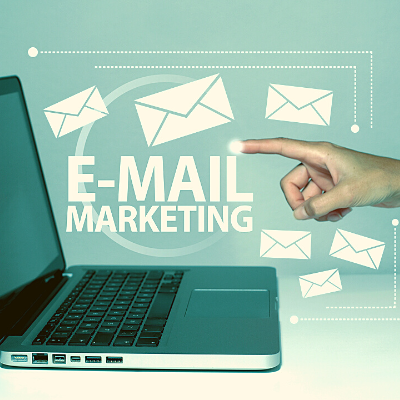To beat business competitors requires cunning and creativity. If you find success, others will try to copy what you’re doing. You may feel as though your competitors are like ravaging wolves trying to nip at your heels and take you down.
There are about 30.7 million small businesses in the United States employing approximately 1.8 million people. The competition in some industries is fiercer than in others, but no matter what type of company you run, you can be sure someone else out there is offering the same thing. If you want to stand out and grab the business from a limited pool of consumers, you must focus on beating your competitors and making your brand as unique and valuable as possible.
Fortunately, there are some key ways of getting an edge over similar businesses. Beating your competitors isn’t just about working harder, but about working smarter.
1. Offer More Services
Customer experience (CX) is one of the trending topics for businesses this year. Researchers predict by 2020, CX is going to overtake price as a way consumers decide which brand to do business with. Spend time reflecting on the unique problems your buyers face. If you’re not sure, take polls and ask them. Then, come up with services that solve these issues.
One recent example of offering more services to meet consumer needs is the grocery pickup and delivery services from leading brands such as Kroger, Target and Walmart. Consumers often complained about the length of time it took to go to the grocery store. So, these brands solved the issue by offering the ability to order groceries with a few clicks online, then pick them up or have them delivered for a small fee.
By providing services that meet the needs of people in your area, you can create brand loyalty and differentiate yourself from the competition.
2. Contactless Payment
COVID-19 has initiated a shift in consumer behavior. Both corporate businesses and customers now prefer to deal with businesses offering contactless payment. Therefore, irrespective of the size of your business and the industry it operates in, offering contactless payment options can help you get ahead of competitors.
3. Delivery at the DoorStep
Whether you run a business-to-consumer (B2C) or business-to-business (B2B) seller, you can now offer to deliver products to customers at their doorsteps. This is the need of the hour due to the risk of pandemic-induced lockdowns.
4. Segment Your Customers
If you haven’t yet created buyer personas, doing so will help you get a handle on who your typical customer is. Look at your internal data and what keywords drive people to your website. Create as many buyer personas as needed to represent your average customers. The more granular you can get, the better. Dig down into the likes and dislikes of each segment of your audience. This is most commonly known as geofencing marketing.
Once you’ve created some separate segments, it is much easier to reach the needs of those buyers and to personalize your messages. Create offers specifically for each segment and send them to your list. Spend time now and segment your customers so you can better meet their needs moving forward.
5. Do Your Research
In order to create your customer persona, you will have to do some research. First, you have to identify what age group your ideal customer belongs to. For instance, if your ideal customer is a Millennial working in a multinational company, you’ll have to create content that attracts Millennials. Secondly, you will have narrow down where to run your marketing campaigns online and offline.
For example, if you are trying to target millennial clientele, you are not going to find many of them on Snapchat or TikTok. Your bet will be to target them on Facebook, Instagram, Twitter, or YouTube.
6. Determine the Demographics
Once you have done the research, you can further narrow down your efforts by categorizing your customers by location, age, gender, profession, interest, etc. This approach is the perfect answer to how to beat your competitors in business. This is because you will be able to create content and a marketing campaign that will strike an emotional connection with your target audience.
7. Map Your Business
If you own a brick-and-mortar store, mapping your business is a vital step in outpacing the competition, although the practice is also helpful for online stores. Business mapping allows you to track the progress of sales reps or see where a competitor covers a territory. Finding underrepresented sections in your area is one way of expanding your business and serving people other businesses may have overlooked.
Business mapping also comes in handy when you’d like to expand from your base and find additional customers. If you’re thinking about opening a second storefront, for example, mapping out the logistics is a must.
8. Create an Amazing Website

Even though they also sell products online, Hobby Lobby is a good example of a company that uses their site to drive in-store sales. They do a couple of things to accomplish this. First, they offer a weekly coupon for 40% off one product. This practice encourages people to visit the website for the coupon and allows them to highlight new items. Next, they choose different products to spotlight each week, which segments their marketing a bit and draws in different consumers from week to week.
9. SEO Your Content
Whether you’re running a small business or a large multinational organization, your content can rule in the digital world if more and more potential customers discover it. One of the best answers to “how to beat your competitors in business” is search engine optimization (SEO) of your online content.
Keyword Research is the Key
First, you must carry out thorough research about trending keywords and key phrases that customers are using to search for products and services like yours. This will help improve your Google search ranking. Better search engine ranking means your website will appear amongst the top results on Google’s search engine result page (SERP).
Local and National SEO
You can either optimize your content for local SEO or international SEO. Both are geofencing techniques to focus on your area of operations. In local SEO, you will be using long-tail keywords and key phrases to target a specific niche, market, city, or state. For example, if you are a car insurance service provider, you can use long-tail keywords like “car insurance in (your city name)” or “buy car insurance in (your city name), etc.
Similarly, if you are an international or interstate service provider, you can use long-tail keywords targeting the customer in your desired area of operation. Let’s suppose you are an online console gaming store aiming to expand your games selling business on a national scale. You can use keywords like “online gaming consoles in the US” or “online gaming store in (name of the state)” to target customers in various locations individually.
Adopting this approach will help you gain a competitive edge over your competitors and enable business growth by leaps and bounds.
10. Focus on a Customer-Driven Model
In the last few years, the emphasis on customers has become paramount. Consider how customer-driven each element of your business is. Take an inventory of everything from your online presence to ordering by phone to the experience in the store. At each point in the buyer’s journey, the customer should feel thoroughly cared about and satisfied. The last thing you want is to have a person feel as though they are merely another number traipsing through your store.
One way of finding weaknesses in your processes is by hiring mystery shoppers to buy from you. These people take notes and report back on what’s working well and what needs improving. You could also poll your current customers and ask them what you can do to make their experience better.
11. Use Your Marketing Budget Wisely

However, you don’t have to spend all your advertising money online. You could also pass out flyers in front of your store, attend a local fair and give out promotional items or offer coupons in your local newspaper. There are so many different ways of promoting your business. The key is to try different tactics, track the results, repeat the ones that work well and drop the ones that don’t.
12. Offer Better Customer Support
Have you ever gone out of your way to eat in a restaurant because the service was outstanding? Perhaps you’ll only take your pets to a specific veterinary office because the staff is so caring toward your fur babies. Customer service does matter. When all other things are equal, people will show your business loyalty if you go out of your way to keep them satisfied.
How do you ramp up your customer service efforts? Start with a company philosophy that puts the customer first. Train employees to go out of their way and treat people as individuals. Zappos comes to mind as a brand that does this. When they heard of a customer who didn’t return her shoes in time because her mother passed away, not only did they let her return the shoes at no charge, but they sent her a flower arrangement to show their sympathy. In doing so, the company created a customer with lifelong loyalty who is happy to spread the word about their kind gesture.
13. Ramp up Your Content
You can also outsmart your business competitors when it comes to online content by providing better information than they do. Start by seeing what keywords they are ranking for by using a tool such as SEMRush. Then, go to a competitor’s website and read through their content. Are there any holes in what they’ve written? These gaps are your goldmine. Now, you have the opportunity to cover the same topic, but expand on it and better meet consumer needs.
For example, let’s say you sell golf clubs. If your competitor has content explaining how to choose the best golf clubs, but they fail to talk about left-handed golfers, you’ve just found your in. Even though there may be a smaller percentage of lefties, covering this topic in detail shows you have taken time to think about this overlooked segment. You may find other areas your competitor hasn’t mentioned as well, such as the type of bag that works best if you’re smaller in stature or if you need a specific type of club as a beginner.
Content SEO
When using SEO strategy, you must ensure to optimize not just the content on your website but your testimonials, blogs, articles, advertisements, and social media posts also. This will create a wide network of highly optimized and synchronized content that will direct a massive amount of organic traffic to your official website. This means more potent lead generation with the potential to convert and increase your return on investment.
14. Improve Relationships
As soon as a person buys from you, you’ve created a customer relationship with them. But what happens after that? If you don’t follow up with those people, you are missing out on an opportunity to improve relationships and develop loyalty. Email a customer and ask if they’re happy with their purchase. Call your biggest client and invite them out for lunch. Throw an event and invite all your regular customers. Wine and dine them a little.
As your relationship deepens, some customers may become brand ambassadors for you, referring other people your way and talking up your company. Encourage this type of word-of-mouth advertising, as it’s one of the most powerful tools in your marketing arsenal. Buyers are much more likely to trust a recommendation from a friend or family member than from you.
15. Find Your Unique Value Proposition
Your unique value proposition (UVP) is your defining quality. The UVP can be anything from the best customer service around to a product or service no one else offers. Once you know what your unique value is, spend time communicating that to your leads. You should list your UVP on your website and tie it to marketing materials. For example, if your UVP is your generous return policy, you might list that at the top of your website or in a store window and have your employees talk about it.
16. Showcase Your Satisfied Customers
Did you know that 95% of customers chose to do business with a company after reading feedback and testimonials of your customers?
Therefore, you must showcase the best feedback from some of your most satisfied clientele. SEO optimizes this feedback to come up in search results when a customer searches for your company’s feedback online. This will build a rapport of trust amongst your new target audience, and they are most likely to buy from you.
If you are wondering how to beat your competitors in business by leveraging customers’ feedback, one of the best ways is video testimonials. Ask your customers to post short videos saying positive things about your business on your website and social media page. Request your customers also to share these videos within their network.
This will help create a brand image trusted by the customers, and you will experience a boom in traffic to your official website and through the door.
17. Learn the Value of Remarketing
Your initial marketing push may cast a pretty wide net. However, the people who respond to those initial ads are obviously interested in what you offer, since they have interacted with you in some way. You can then remarket to these people and send out a second message targeted to their needs.
Often, people must see your message multiple times before they decide to buy. There is a feeling-out period where they get to know your business and you build trust with them. Your competition is likely targeting the same people. If you are smart about your remarketing, you can grab them as customers and outsmart your competitors before they reach them.
18. Email for Remarketing

The best thing about email remarketing is that it is free of cost. Additionally, you can remarket your business to target customers based on various demographics. For instance, you can create separate mailing lists for customers based on their location, interest, purchasing habits, preferred products, age, gender, and profession.
This will help you avoid spamming and being blocked by the customers. A customized email addressing your customers’ pain points will strike a connection, and they are most like to reconsider buying from you.
19. Use Your Competitors’ Emails Against Them
You can be sure your competitors are actively sending out messages to your core audience. However, you can get your ads in front of anyone these businesses communicate with by using their keywords to create Gmail ads. How does this work? First, you must subscribe to your competitors’ mailing lists. Make a chart of when each brand sends out emails. Next, put an employee in charge of checking for that email and listing the subject line, highlighting the likely keywords in the subject.
Then, create an ad that sits right at the top of the person’s Gmail account and has the same keywords. Use action words and short, attention-grabbing descriptions. Nab those customers before they even open the competing email.
20. Establish Your Authority
Have you ever gone out of your way or spent more to go to a specific service provider? Perhaps they are subject matter experts who offer advice you can’t get anywhere else. Establishing your authority gives you an edge over the competition because your customers will know you won’t merely solve their problems, but will go above and beyond.
Invest in training for yourself and your employees. If there are any gaps in your knowledge, find ways to fill them. Expand beyond what your competition knows, so you are the utmost authority in your field. Write frequently on topics related to your field and offer talks and workshops. The more you teach and talk about your knowledge, the more you’ll learn.
21. Find Your Niche
If you try to be the best at everything, you’ll probably not be very good at anything. Figure out what your niche is as a business and focus on becoming the best in that area. If you’re a florist competing against other local flower shops as well as online retailers, think about how you can set yourself apart. Maybe your specialty is bereavement collections. Figure out how to create the most heartfelt and beautiful arrangements anywhere. Tap into the emotions and desires of your customers and set yourself apart in this one area.
You can always expand to other niches later on, but focusing on one allows you to become an expert in that area before expanding further.
22. Network With Others
Join other business owners in your area and attend your chamber of commerce meetings. Go to trade shows and conferences for businesses in your industry. The more you network with others, the more ideas you’ll gain for promoting your business and outpacing your competitors. While you may never be a corporation the size of Amazon, you can find success in your community and your specialty.
Conclusion
When it comes to outsmarting your competition, it isn’t about who has the bigger brain. Sometimes, the tiny details make a customer choose you over the other brand. Listen carefully to what your customers say, and fix any issues immediately. Try different tactics and pay attention to what your competitors do to stand out from them. Your hard work can make the difference between a casual customer and a lifelong fan.
Now that you know how to beat your competitors in the business, it is time for you to apply these strategies. The best part about most of these strategies is that you can apply them regardless of your business size and industry. You can start by doing some research or seeking the help of an expert digital marketing agency. They can help you with the tech-savvy aspects of the strategies at an affordable budget.

Author Bio
Angelo Frisina is a highly experienced author and digital marketing expert with over two decades of experience in the field. He specializes in web design, app development, SEO, and blockchain technologies.
Angelo’s extensive knowledge of these areas has led to the creation of several numerous award winning websites and mobile applications, as well as the implementation of effective digital marketing strategies for a wide range of clients.
Angelo is also a respected consultant, sharing his insights and expertise through various podcasts and online digital marketing resources.
With a passion for staying up-to-date with the latest trends and developments in the digital world, Angelo is a valuable asset to any organization looking to stay ahead in the digital landscape.




